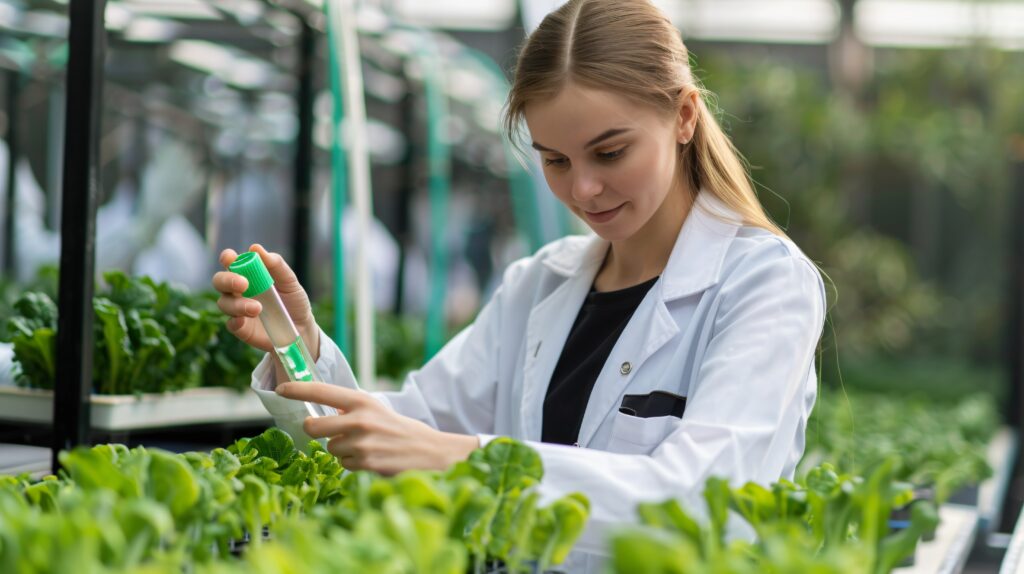🌱 What Is Agricultural Biotechnology?
It is based on employing living systems—microbes, cells, genes—to enhance agriculture results: yield, resilience, nutrition, environmental sustainability.
🌾 Core Biotech Tools & Techniques
- Genetic Engineering & GMOs
It entails the introduction of genes from one species into plants to impart desired characteristics such as insect resistance (e.g., Bt toxin) or herbicide tolerance.
Bt cotton and eggplant (brinjal) produce Bt toxins, significantly reducing the use of pesticides and boosting yields. - Genome Editing (CRISPR‑Cas9)
Enables accurate, specific edits in crops for enhanced yield, disease tolerance, nutrient levels, and decreased allergens.
Examples are drought-tolerant maize, gluten-free wheat, and non-browning fruits. - Marker-Assisted Breeding & Tissue Culture
Quick production of high-yielding varieties using molecular markers and cloning. - Biopesticides/Biofertilizers & Nanobiotechnology
Utilization of microbial agents and natural products as an alternative to chemical products.
Nano-carriers improve specific delivery of nutrients/pesticides, reducing environmental footprint.
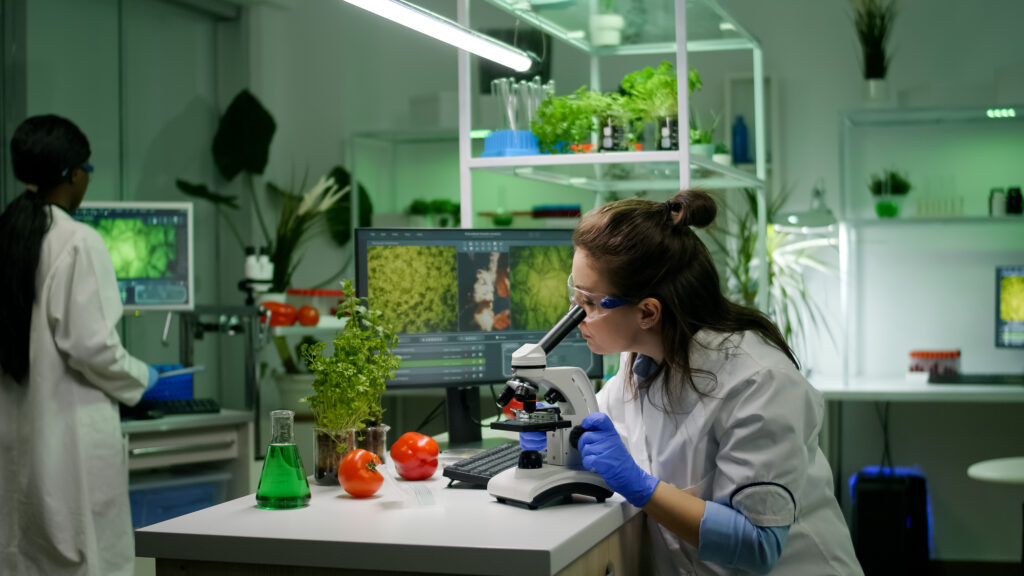
🎯 Key Applications & Real-World Examples
1. Innovation Adoption (Diffusion Theory + TAM/TOE)
- Concept: Farmers and agri-stakeholders make decisions to adopt biotech innovations (such as Bt cotton, virus-resistant papaya, Golden Rice) in a systematic process based on perceived benefits, compatibility, simplicity of use, and environmental surroundings.
- Diffusion of Innovations (Rogers): Adoption is contingent upon relative advantage, compatibility, trialability, observability, and complexity.
- Technology Acceptance Model (TAM) / Theory of Planned Behavior (TPB): Adoption on individual level based on perceived ease and usefulness .
- TOE Framework: Decisions of organization influenced by technological characteristics, organizational preparedness, and environment .
- Applied Examples:
- Bt cotton offered relative advantage (less insecticide), initially compatible with conventional practices, seen through visible reduction of pest—resulting in diffusion among farmers.
- Golden Rice solves malnutrition (substantial social benefit), but its uptake relies on cultural acceptance and regulatory framework.
2. Biological Control & Pest Management (Game Theory + Systems Modeling)
- Concept: Pest resistance and agroecological dynamics are formulated through strategic interactions of pests and human management, quantified through game-theoretic and ecological models.
- Game Theory Framework: Formulates strategic choices on pesticide application, refugia, etc., to slow down the evolution of resistance.
- Prey–Predator & Epidemiological Models: Measure equilibrium states in biocontrol, reconciling pest suppression with ecological stability .
- Applied Examples:
- Bt cotton resistance management applies game theory to reconcile ecological and evolutionary results.
- DroughtGard maize and CRISPR nutrition crops integrate resilience through genetic characteristics while engaging with AI/precision systems.
3. Integrated Pest & Disease Resistance (Biotechnical+Ecological Systems)
- Concept: Synergizing genetic tools (Bt, CRISPR, RNAi, virus-resistance) with ecological practices (induced resistance, cover crops, IPM), improving plant defense as well as environmental resilience.
- Host Plant Resistance Theory: Expands Painter’s antixenosis/antibiosis/tolerance theory .
- Induced Systemic Resistance (ISR/SAR): Deploys plant immune response initiated by beneficial microbes or stimuli .
- Ecological Biotech Models: Mathematical models combine biotech traits and ecosystem processes to maximize pest control .
- Applied Examples:
- Virus-resistant papaya restored productivity via genetic resistance.
- Non-browning/bruise-resistance potatoes minimize waste through genetic and ecological synergism.
- ISR utilizes biotech and microbes to provide disease resistance.
4. Climate Resilience & Post-Harvest Efficiency (Trait-Based Systems)
- Concept: Genetic improvements for drought tolerance and shelf-life are integrated within agricultural systems enriched with precision tools.
- Trait–Environment Matching Models: Genetic traits chosen to maximize performance under climatic stress through systems modeling.
- Post-Harvest Engineering Models: Trait improvement integrated with supply-chain models to lower wastage.
- Applied Examples:
- DroughtGard maize employs water-deficit tolerant genetics along with AI/IOT tracking.
- Non-browning bananas/potatoes enhance supply chain quality through trait-stability under diverse conditions.
5. Precision Agriculture Integration (Cyber-Physical Systems + Smart Farming)
- Concept: Biotech innovations are intergrated with Agri‑Cyber‑Physical Systems (ACPS)—uniting AI, IoT, robotics for real-time trait management and optimization.
- Cyber-Physical Feedback Loops: Genetically improved crops are tracked and controlled in real-time (e.g., soil moisture, nutrient stress, disease warnings).
- Complex Adaptive Systems: Biotech, environmental sensors, and agronomic decision-making constitute joined-up networks.
- Applied Examples:
- AI/drones sense stress in biotech-improved crops, triggering interventions.
- IoT-connected CRISPR-nutrient crops provide data-driven nutrient management.
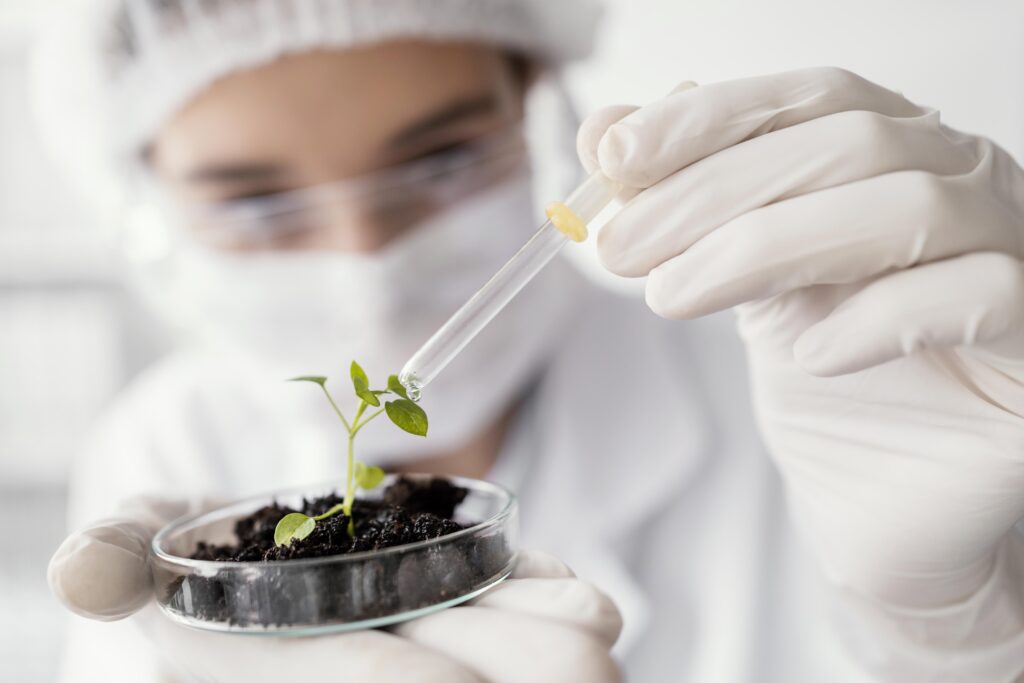
✅ Advantages & Contribution
- Improved Yields & Food Availability: Improved crop yields enhance world demand .
- Environmental Health: Lesser use of agrochemicals and conservation of water, soil, and biological diversity .
- Economic Benefits: Reduced input costs, improved yields, and increased profitability of farmers .
- Nutrition & Health: Biofortified crops minimize micronutrient deficiencies among populations .
⚠Disadvantages & Challenges
- Regulatory & Legal Challenges: Varying pathways of approval in the world impact market access .
- Public Image: Consumer concerns.
- Environmental & Biosafety Concerns: Gene transfer to wild relatives and decreased biodiversity are ecological concerns .
- Equity & Access: IP problems and R&D expense can restrict benefits to smallholders .
🔮 Emerging Trends & the Future
- AI-Driven Genomics & Genome Editing
- AI technology is speeding up CRISPR breakthroughs and fine-tuning crop characteristics .
- Integrated Tech: IoT, Precision Ag, Robotics
- Biotech crops more often combined with precision agriculture, digitization and robots to yield best results .
- Sustainable Biological Inputs
- Development of biopesticides, biofertilizers, and circular agri-systems consistent with consumer demand .
- Global Policy Push
- China, India, and Odisha (India) are instituting biotech initiatives and financing schemes.
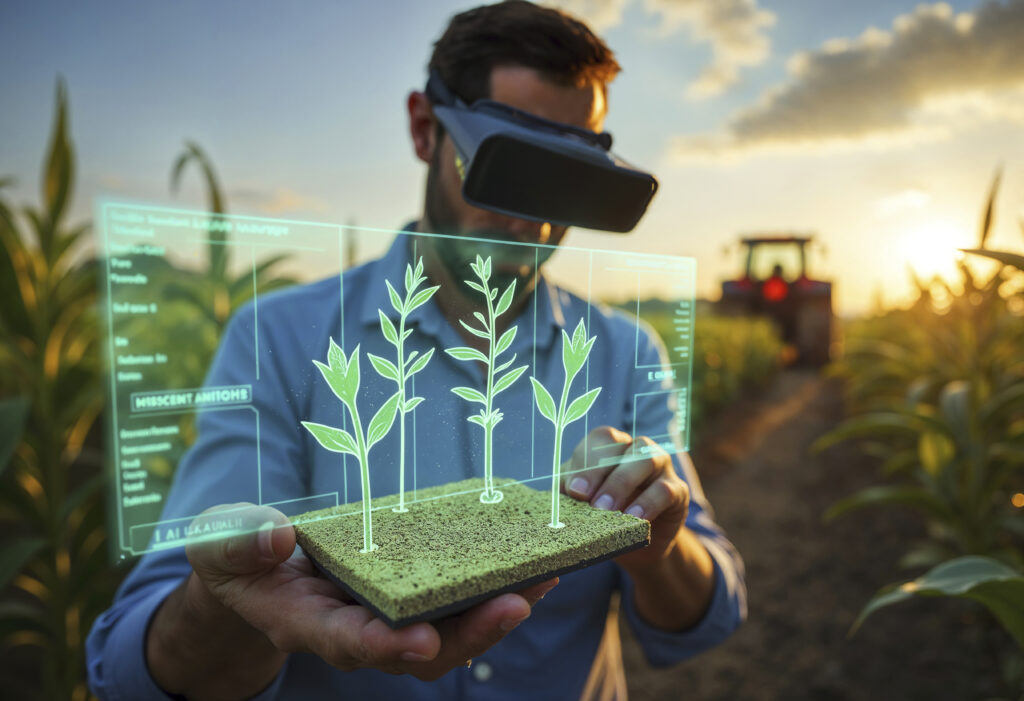
🇮🇳 Innovations & Policy in India
1. Genome-Edited Rice Lines
India has approved ‘Kamala’ (DRR Dhan 100) and ‘Pusa DST Rice 1’, the nation’s first genome-edited, drought- and salinity-resistant rice lines developed through CRISPR-Cas9 without foreign DNA introduction.
- Kamala: early-maturing, ~19% yield increase over Samba Mahsuri, saves ~3 irrigation cycles, may reduce 32,000 t CO₂ emissions
- Pusa DST Rice 1: resistance to salinity/drought, yield improvement of 9.6–30.4% under stress
2. Flood-Tolerant Rice Variety MTU 1232
It was developed by ANGRAU & ICAR, employing the Sub1A gene to resist flash floods (~10–14 days) and stagnant flooding (~50 cm), with 80% survival and production reaching up to 6 t/ha under non-stressed conditions .
3. GM Mustard ‘DMH‑11’ Under Review
This transgenic mustard is endowed with barnase/barstar/Bar genes for male sterility and resistance to herbicides with the objective of lowering India’s edible oil imports (~₹60,000 crore/year). Field trials have run into regulatory delays amidst ecological as well as public concerns.
4. Tissue Culture & Biotech Inputs
- Rapid scale-up of disease-free planting using tissue culture in crops like banana, orchid, and potato .
- Growing adoption of biopesticides (e.g. Trichoderma, Beauveria) and biofertilizers (e.g. rhizobacteria, mycorrhizae) to enhance soil health and reduce agrochemicals .
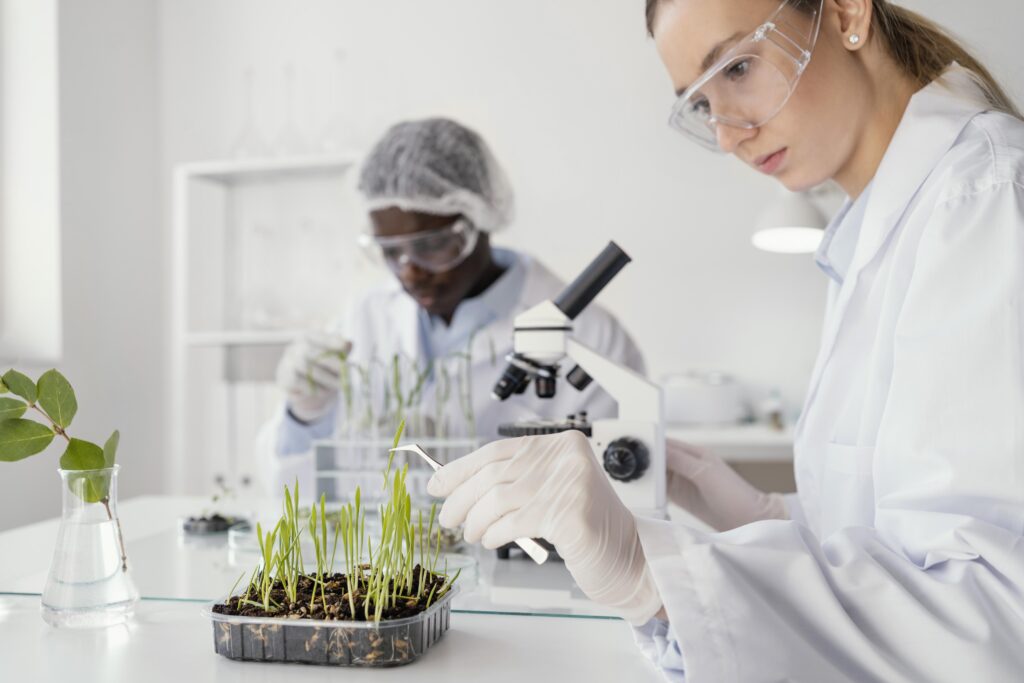
🌾 Tech-Driven Agriculture
5. AI-Powered Tools & Analytics
- KissanAI’s Dhenu 1.0/2.0: multilingual LLMs (English, Hindi, Hinglish) assisting 100k+ farmers via voice/text for agri advice.
- AI-driven crop models, pest monitoring, weather sensors (such as IIT Ropar weather stations) aiding decision-making in Maharashtra and Assam .
- Farmonaut, Cropin, Agripilot.ai: leveraging IoT data for optimized irrigation, pest management, crop selection—FarmPilot in Maharashtra reduced costs by ~50% .
6. “Breeding 4.0” – AI + Multi-Omics
High-throughput phenotyping (such as UAV imaging), sensor inputs, and multi-omics are employed in next-gen crop breeding for pinpointing stress-resistance genes.
🌱 Emerging Fields & Environmental Biotech
7. Living Intelligence
A new convergence of AI, biosensors, and synthetic biology to develop adaptive, intelligent biological systems for agriculture .
8. Cellular Agriculture & Synthetic Biology
- Crafting tailor-made microbes/plants for new chemicals, biofuels, bioplastics, pesticides .
- Cellular agriculture for meat, milk, eggs in vitro—lowering environmental footprint .
9. Nanotech in Genetic Delivery
Application of nanoparticles and carbon nanotubes to transfect genes into plants without integrating foreign DNA, making it possible for non-GMO editing.

